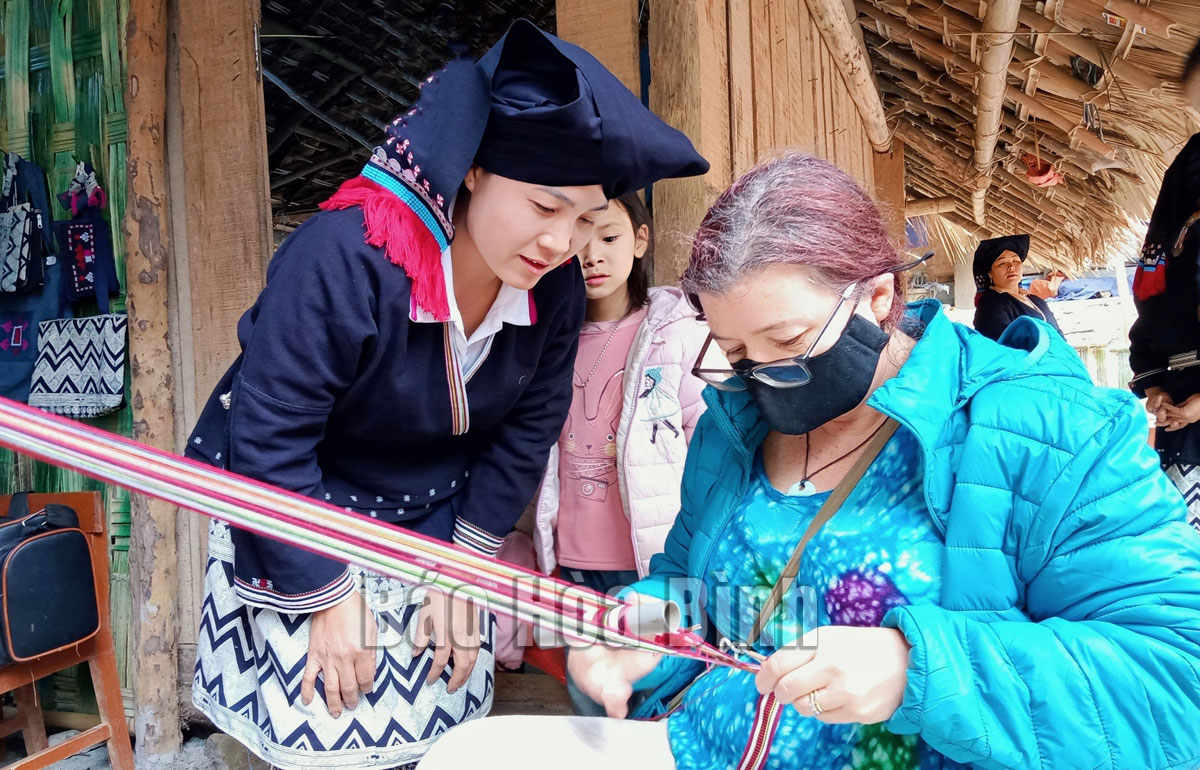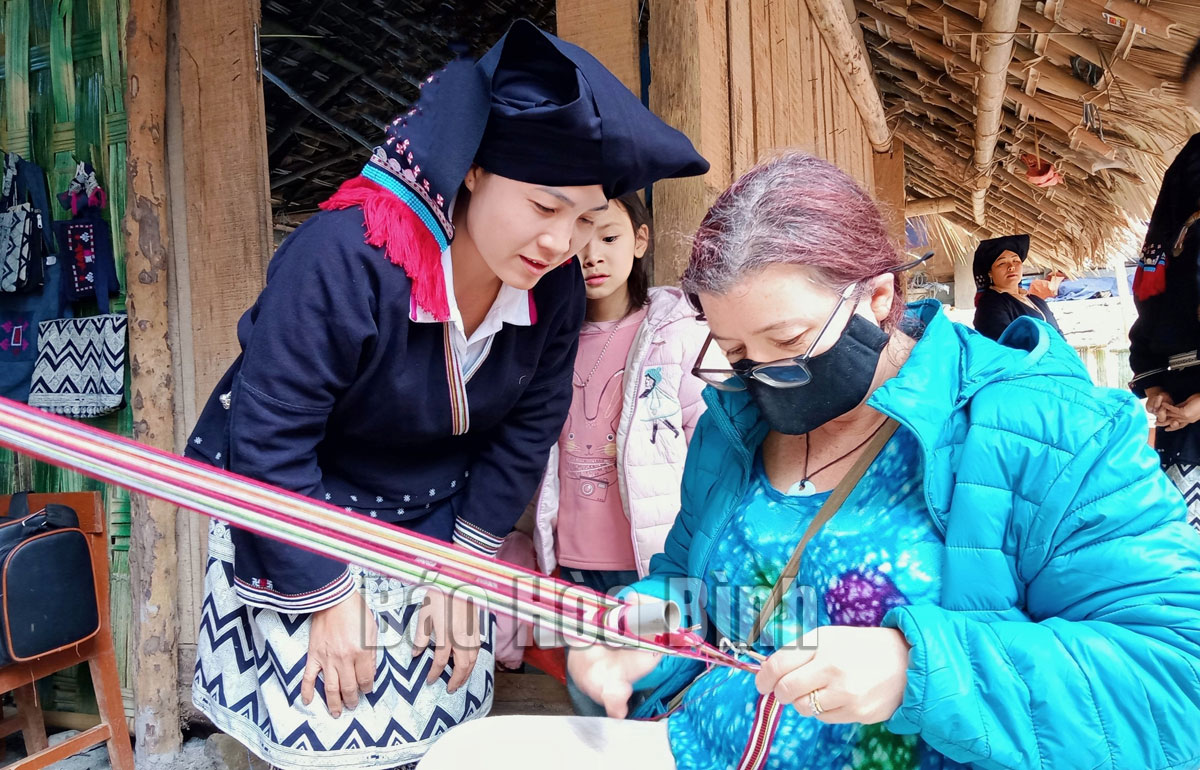
(HBO) - Unique cultural features and pristine nature have helped the mountainous district of Da Bac to attract visitors.
Foreign tourists excited to experience
the brocade weaving of the Dao Tien people in Sung hamlet, Cao Son commune, Da
Bac district.
Over the recent years, the district has paid great attention to developing
community-based tourism which is suitable for the mountainous district with
hamlets and villages of ethnic groups.
For example,Sung hamlet with a history of more than
500 years is home to more than 70 households of the Dao Tien ethnic group. With
untouched nature, Sung hamlet attracts more and more tourists, especially as
local people still keep their traditional houses, maintain brocade weaving and
restore their unique traditional culture.
Villager Ly Thi Nhat said that in the past, people mainly
wore the clothes they made. Nowadays, many young people have switched to
wearing ready-made clothes.
Therefore, there was a time when traditional brocade
weaving was at risk of disappearing. However, thanks to the development of
community tourism, villagers have restored traditional weaving. A brocade production
group in the hamlet currently has 12 members earning a stable income thanks to
the traditional job.
Community-based tourism also helps restore many
traditional occupations and values, for example herbal medicines. Herbal bath is now a tourism product of the hamlet.
Ly Van Minh, owner of a herbal bathing facility, said that
since ancient times, the Dao people have owned many valuable remedies,
including bath remedies. The restoration of these remedies not only helps people
preserve tradition but also creates tourism products to attract tourists.
Moreover, Sung villagers have also restored the profession
of making dó paper. Thanks to the preserved traditional cultural features, the
hamlet has made a good impression on tourists. Along with the development of
local tourism, villagers are motivated to continue to preserve and promote
their traditional culture. That creates the foundation for sustainable tourism
development, bringing long-term economic benefits to locals.
With the advantages of the natural landscape, culture, and
people, Da Bac district has a lot of potential to develop unique and attractive
types of tourism. Currently, the district is focusing on improving
infrastructure, attracting investment to promote tourism development. People
are called on to protect the landscape and environment, and harmoniously
combine cultural conservation with tourism development./.
Located just a 20-minute drive from Hoa Binh City, Ora Hill Farmstay & Glamping Hoa Binh is a captivating new destination nestled in Mo hamlet, Bình Thanh commune, Cao Phong district. Combining farming with leisure, this tranquil retreat is perfect for those seeking balance, joy, and an immersive experience in the expansive beauty of nature.
Muong Bi - Tan Lac is renowned as one of the four famous Muong regions in Hoa Binh province. Blessed by nature with a favourable climate and stunning landscapes, Tan Lac holds great advantages for tourism development. The local tourism industry has made remarkable strides in recent times thanks to the attention and support from the local authorities and sectors.
With its strategic location, well-developed transport network, and diverse soil and climatic conditions, Hoa Binh is emerging as a must-visit destination in Vietnam's northwestern tourism corridor. The province boasts numerous attractions, including the Kim Boi hot springs (Kim Boi district), the Dau Rong cave complex (Cao Phong), the Mai Chau valley (Mai Chau), and the iconic Hoa Binh hydropower plant.
The northern mountainous province of Hoa Binh has been listed among the 71 most beautiful places to visit worldwide by the prestigious US travel magazine Condé Nast Traveller.
Hoa Binh province’s rich natural and cultural resources position it as a prime location for developing community-based tourism (CBT). In recent years, support from central and provincial policies, as well as assistance from non-governmental organisations, have encouraged local ethnic minority and mountainous communities to actively engage in the sector.



